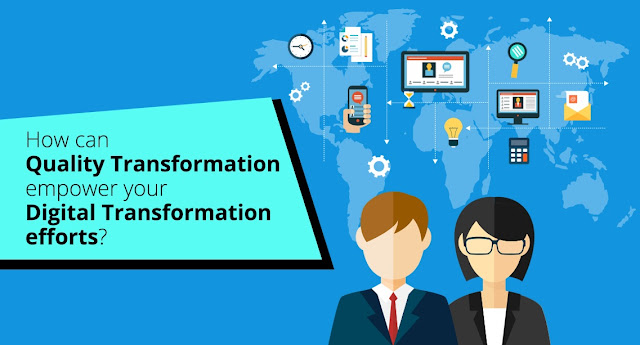Why must you transform your Software Testing strategy in 2019?
 |
| Software Testing Strategy |
The complexity of software applications has grown manifold thanks
to an increase in their delivery touchpoints, device platforms,
functionalities, features, networks, and embedded technologies. Businesses more
than ever before have their tasks cut out – develop quality applications and
accelerate their delivery to the market. Furthermore, developments such as
Agile and DevOps with their outcomes focused on Continuous Integration and
Delivery, the software testing strategy needs a transformation of sorts. This
has become important for businesses to stay relevant and exceed customer
expectations.
Let’s find out why the software testing strategy of your
business should undergo a change in 2019.
# 1. The growing footprint of IoT: You must have seen
increased automation in consumer durables like television, air conditioner,
geyser etc. For example, the display of your television set can adjust its
intensity based on the ambient light. Also, the geyser switches off on its own
should the temperature of water reaches a certain threshold. Such experiences
have become possible due to the presence of embedded software in these devices.
Now, unless the quality of such embedded software remains top
notch, the functioning of these devices will leave a lot to be desired. Hence,
the software testing methodology should not only test the application(s)
independently but also as an integral part of the device. As IoT spreads its footprint
all across, software application testing should be comprehensive ensuring each
and every functionality and APIs meet their desired objectives. It calls for
adopting a software testing approach with a view to validate the software’s
usability, compatibility, scalability, reliability, security, performance, and
data integrity.
#2. The advent of AI and machine learning technology: The year 2019 will
see AI and machine learning expand their outreach into newer domains. Moreover,
software application testing too would involve the use of AI to meet the
challenges of growing complexity, repetitive tasks, and accelerating the time
to market etc. These will augment the capabilities of human testers manifold
and release them from conducting mundane, repetitive or highly critical tasks.
This will lead to the optimization of resources and the meeting of stringent
turnarounds.
#3. Big data testing: A number of software applications with a multitude of APIs
generate a humongous amount of data. For example, software buying tickets for
airlines or railways among others. Here, such volume of data needs to be
validated on criteria such as performance and functional testing. In addition
to the software, the data should also be validated on parameters such as accuracy,
completeness, security, consistency, integrity, and validity.
#4. Shift towards performance engineering: With the quality of
software applications being determined by the number of their digital
touchpoints and APIs, traditional performance testing needs to give way to
performance engineering. In other words, the software testing approach will no
longer test the performance of software on metrics such as load, test, spike,
scalability, endurance, and volume alone. Performance engineering would entail
analyzing how various elements of a system collaborate in a seamless way to
deliver quality outcomes. The elements would include the entire sweep of
business and software – security, usability, performance, hardware, operations,
ROI, and customer experience.
#5. Shift towards quality engineering: The traditional
quality assurance methodology does not fit into the emerging scheme of things
anymore. As Agile and DevOps become the de facto industry benchmarks, the shift
is more towards ensuring integration and testing throughout the SDLC and
beyond. This calls for engaging quality engineering to foolproof a system
against inherent glitches in the entire development and operations processes by
adopting test automation.
#6. Challenges of test automation: The growing
complexity of software with demands such as delivering faster testing cycles,
identifying glitches early and ensuring a greater test coverage means adopting
test automation in a big way. This helps the team to focus on tasks such as
preparing automated test cases, simulating variables and analysing test
reports. Since testing would be both for the functional and non-functional
aspects, test automation becomes the best approach.
#7. Security of applications: Even though software technology is
making our daily tasks convenient, easy, fast and glitch free, the spectre of
security breach looms large. With security becoming the single most challenge
facing testers and developers in 2019 and the foreseeable future, the DevOpstesting methodology should include security in the form of DevSecOps.
Conclusion
Testing software has become the sine qua non for businesses to
deliver glitch free applications and ensure better test coverage and a faster
time to market. The year 2019 will see businesses adopt new testing
methodologies to stay ahead in the competition and achieve great customer
experience.
Diya works for Cigniti Technologies, which is the world’s first
Independent Software Testing Company to
be appraised at CMMI-SVC v1.3, Maturity Level 5, and is also ISO 9001:2015
& ISO 27001:2013 certified.



Comments
Post a Comment